Turtle power: Watch for these slow-moving terrific tetrapods
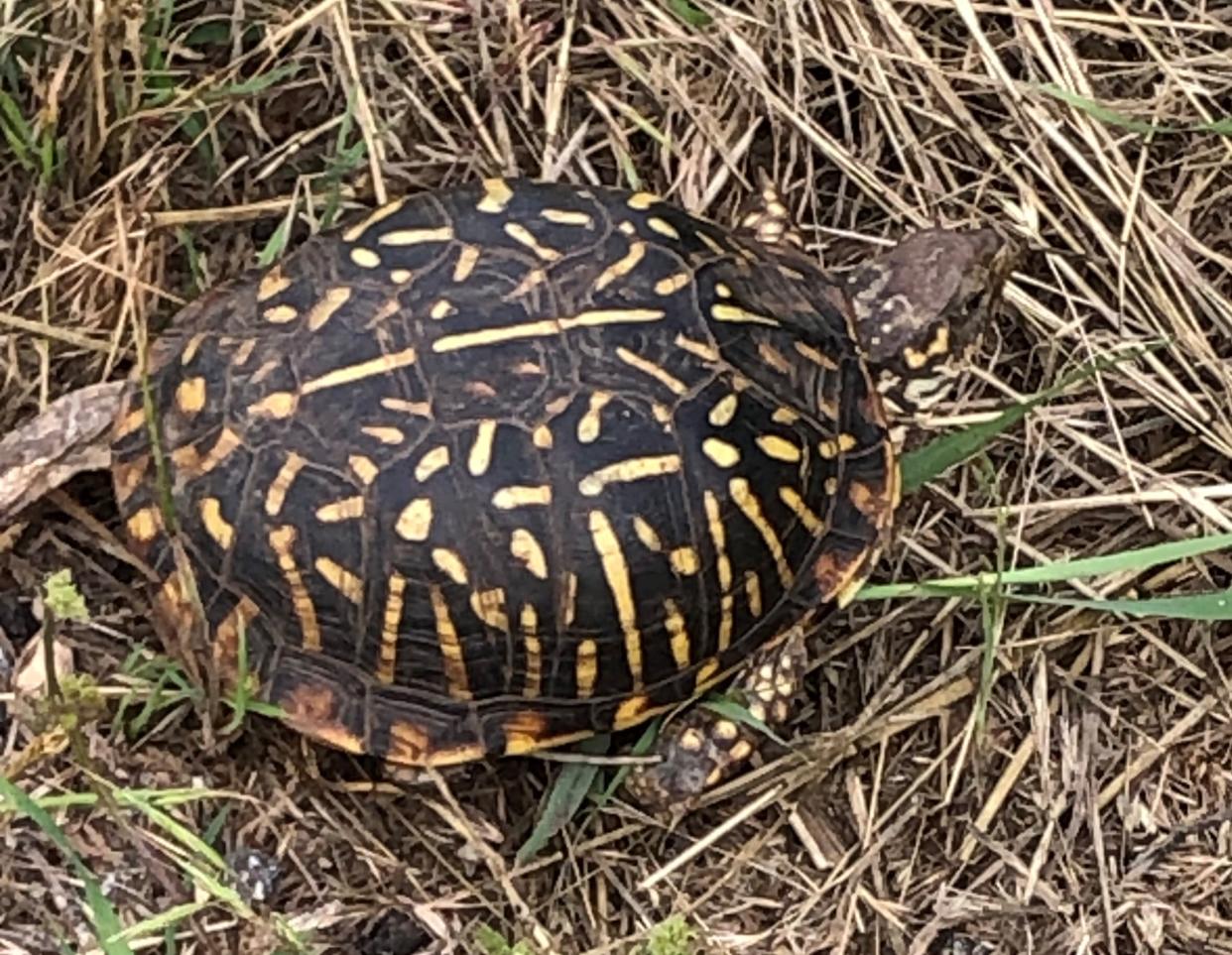
Turtles are such a familiar sight to most north-central Texas and southwestern Oklahoma residents that we think little about these unique and adaptable animals. Turtles have been present in their essentially modern forms since the time of the archosaurs and dinosaurs and turtles survived the great environmental catastrophe(s) which eliminated those ruling reptile groups!
Shelled success story
One of the greatest success stories of turtles is a shell which, in most species, is composed of bone, cartilage and keratin. If you’ve looked inside the upper part of a turtle’s shell (carapace), you noticed that the turtle’s vertebrae (excluding the vertebra of the neck and tail), ribs, and parts of its front and hind limb bones were fused with the bony shell elements. The shell extends around to the ventral (belly) side of the turtle (plastron); thus providing excellent, armor-like protection that has stood the test of time. The outside of the shell is comprised of keratin and is often ornamented with distinctive, species-specific colors and patterns. Our area turtles are members of the Order Cryptodira (meaning hidden neck). Turtles can retract their heads straight back into their shells for protection. Most species can fully, or partially, retract their legs and tail into the shell and some species have a hinged plastron which closes whenever the turtle withdraws into its shell.
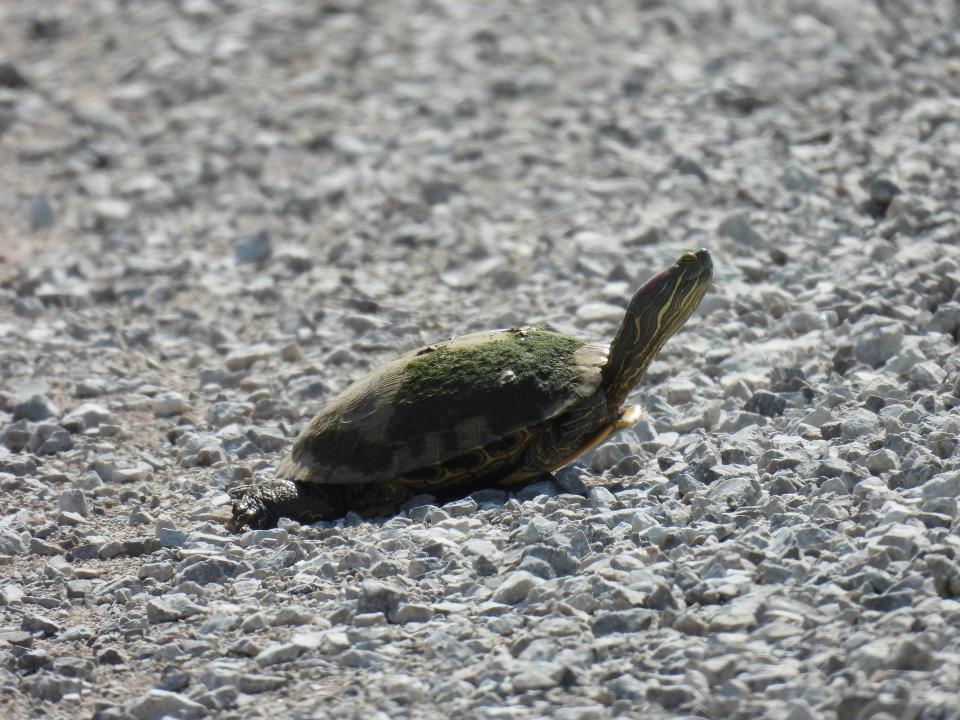
Turtles are tetrapod (four-legged) reptiles and are cold-blooded (endothermic), sun-basking animals. Turtles breathe air and have well-developed lungs. Additionally, many aquatic species can obtain some oxygen while underwater via the epithelial tissues (skin) inside their mouth and cloaca. Their shells, keratinized, scaly skin, and specialized amniotic, shelled eggs have enabled turtle success in some very dry environments. Terrestrial species (Box Turtles, for example) store water in their urinary bladders and excrete a pasty waste product called uric acid in order to conserve water in hot, dry environments; whereas, freshwater species (Pond Sliders, for example) produce large amounts of dilute urine and don’t need to conserve much water.
Basking times may vary
Turtles bask in the sun to maintain appropriate internal body temperatures but the amount of time spent basking depends upon the season of the year and where the turtles reside. For example, basking times tend to be longer during spring and fall months than during summer. In order to survive low temperatures during winter, terrestrial turtles will burrow into the soil or leaf litter; whereas, freshwater species will often bury themselves in pond mud. The turtles lower their metabolism, heartbeat, and breathing and enter a state called ‘brumation’ (similar to hibernation of warm-blooded animals). Female turtles excavate nests and lay several fertilized eggs in each nest (more than one clutch may be produced each year). The eggs are covered with soil and/or debris and the female provides no care for the young. Depending upon the species, the gender of turtle hatchlings is sometimes determined by the incubation temperatures of the eggs. Warmer nest temperatures often result in higher numbers of females; whereas, cooler temperatures result in more male hatchlings. Young turtles break out of their eggs using a temporary ‘egg tooth’ (similar to the egg tooth of birds), dig out of their nest, and begin independent lives feeding on insects, small invertebrates, and vegetation. Surprisingly, despite some turtles’ known reputations for powerful bites, no teeth are found in a turtle’s jaw! Instead the jaws have a sharp, cutting, keratinized edge called the ‘tomium’(= ‘to slice or cut’).
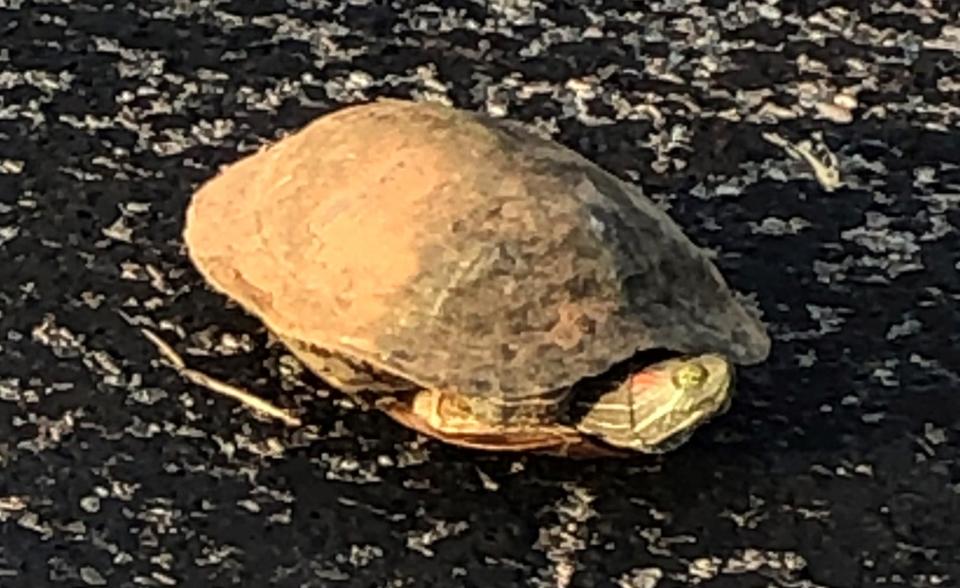
Red ears versus red eyes
Let’s look at two turtle species found throughout our area, but usually in different habitats. Both species were commercially collected for the pet trade in the past. The Red-eared Slider is still commercially collected and has become more widely distributed; whereas the Ornate Box Turtle has experienced population declines and is protected from commercial collection in Texas and Oklahoma.
The Red-eared Slider is possibly the most abundant turtle species in our area and is readily identified by the usually broad, red stripe behind its eyes. The overall color of the Red-eared Slider is olive green to brown and numerous yellow stripes are found on the head and neck with narrow yellow stripes extending down the legs. Vertical, yellow stripes are also found on the turtle’s rump. The carapace of the shell may be marked with yellow or orange lines. Some individuals become more melanistic as they age and their colors and patterns become uniformly dark and obscured. The toes of the Red-eared Slider are webbed and males possess longer toenails, which are used to gently stroke the female’s face during courtship.
Red-eared Sliders are diurnal and omnivorous, feeding upon aquatic vegetation, insects, crayfish, tadpoles, small fish, and carrion. Although turtles don’t hear very well, they are sensitive to surface vibrations and have excellent eyesight. Part of their common name refers to their habit of ‘sliding’ into the water from logs, rocks, and pond and stream banks whenever a threat is detected. Red-eared sliders (especially young turtles) have many predators including snakes, wading birds (such as the Great Blue Heron), raccoons, skunks, and coyotes. These turtles inhabit streams, rivers, lakes, and ponds throughout our area and are frequently seen on trails and roads as they move between bodies of water.
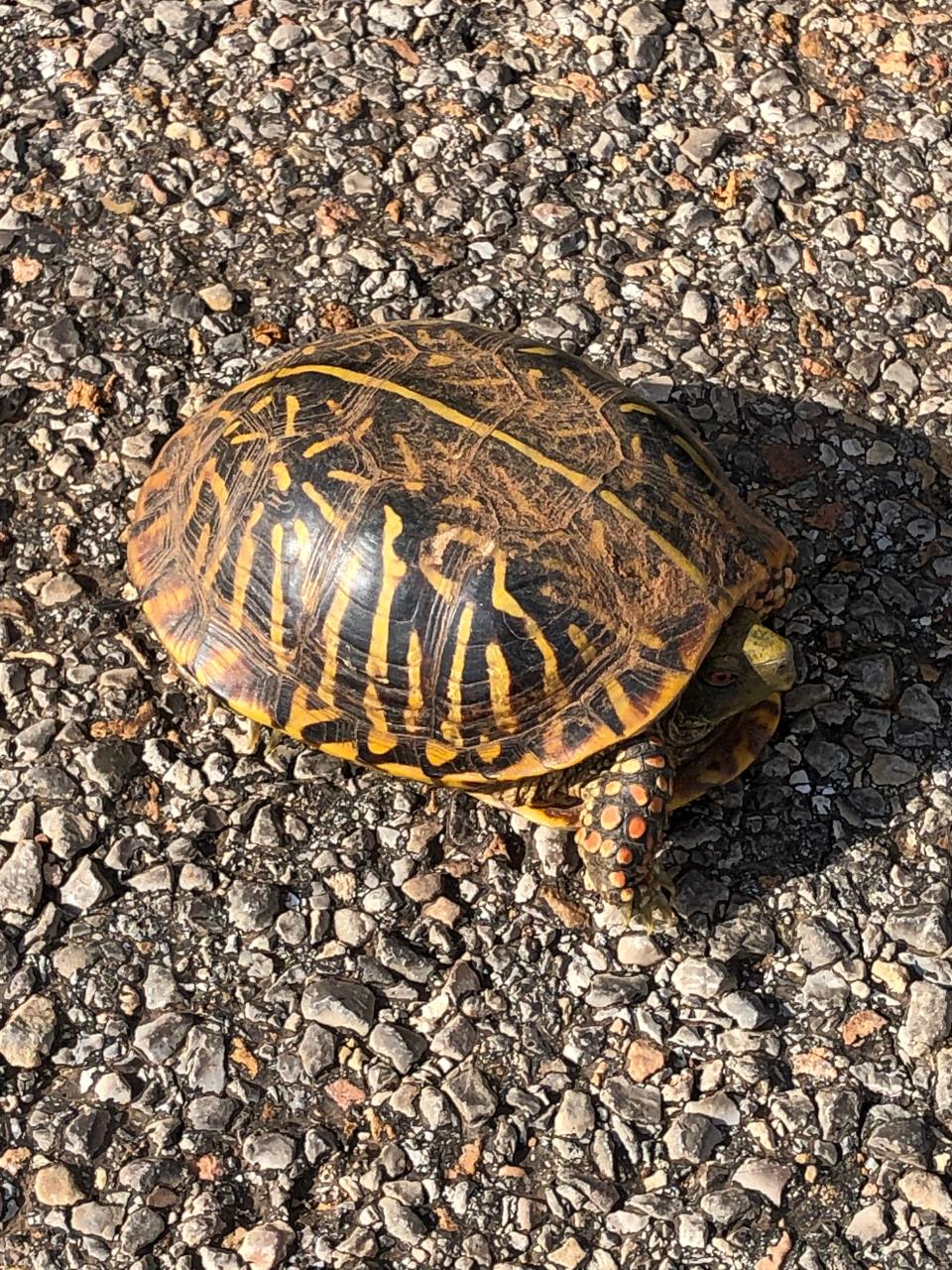
Thinking inside the box
Ornate Box Turtles may be found in open, grassy habitats, savannahs, and mixed woodlands throughout our region. Ornate Box Turtles are easily recognized by their reddish-brown, high, domed carapace marked with a mid-dorsal, yellow stripe and yellow, lines on each scute. The plastron is flexible and has a distinct hinge allowing complete closure of the shell after the head, limbs, and tail are drawn inside. Ornate Box Turtles are sexually dimorphic. Males have red or orange eyes and red to orange spots on their forelimbs; whereas, females have yellowish-colored eyes and yellow spotting on the forelimbs. The plastron is concave in males and flat in females.
Digger not a swimmer
Box Turtles are primarily diurnal and active during morning and late afternoon hours. Their toes are not webbed and Box Turtles are good diggers. Ornate Box Turtles excavate temporary, shallow depressions (or seek shelter under rocks, logs, or vegetation) during the hottest hours of the day. Deeper burrows are constructed for use during the colder, winter months. Box Turtles can swim but they are not as adept as other species of turtles. However, they will seek out water for drinking and cooling off and may be found around ponds, pools, streams, and roadside ditches containing water. Ornate Box Turtles are omnivores and their diet consists primarily of insects, eggs, smaller vertebrate animals, carrion, and a small percentage of vegetable matter and berries. These versatile turtles have even been observed searching for beetles in cattle dung. Habitat loss and fragmentation and road mortalities have resulted in declining populations of these docile, attractive turtles.
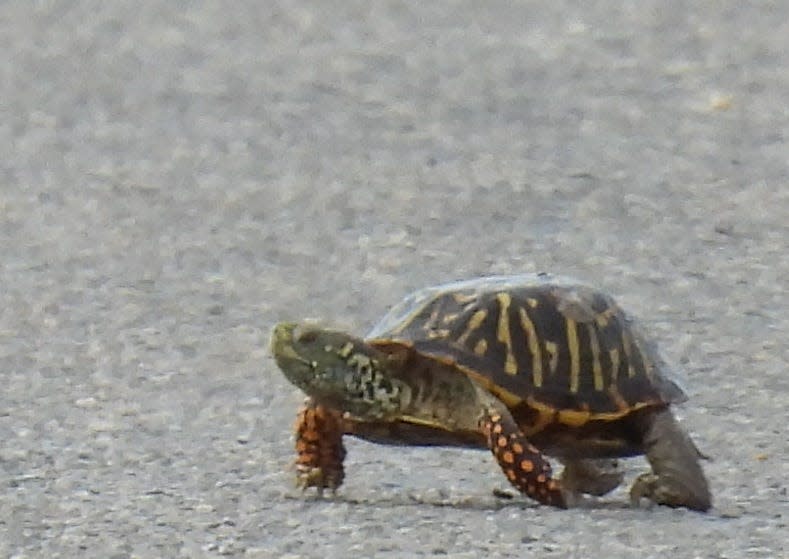
Slow-moving survivors!
Look for Red-eared Sliders and Ornate Box Turtles around water and/or along roads and trails whenever you are out-and-about our area. Search for them along area roads; especially before and after rains and remember their reputation for ‘slow moving’! However, also remember that, although turtles may be ‘slow’ by some standards, they have also been ‘survivors’ on our planet for a very long time!
Jim Goetze is a retired professor of biology and former chairperson of the Natural Sciences Department of Laredo College with an avid interest in all aspects of the natural world. He can be contacted at gonorthtxnature@gmail.com
This article originally appeared on Wichita Falls Times Record News: Turtle power: Watch for these slow-moving terrific tetrapods

